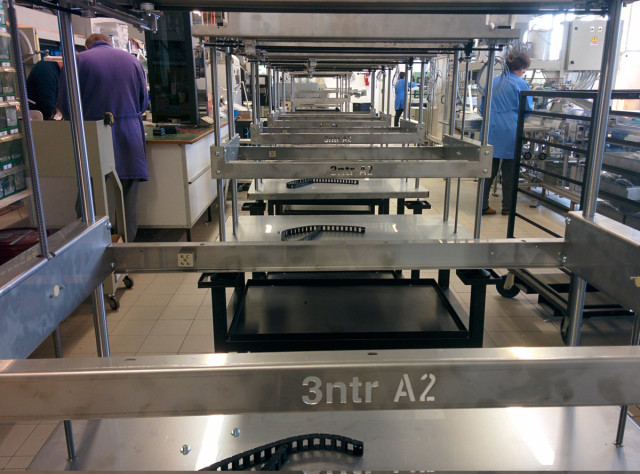
Stratasys invented fused deposition modeling (FDM) in 1989, establishing itself as a leader in the field with its brand of plastic extrusion.
After the expiration of key patents in 2009, however, a new generation of systems exploded onto the scene, resulting in two distinct categories of extrusion-style 3D printers on the market: high-priced industrial systems from Stratasys on the one hand and low-cost hobby machines from new startup companies on the other. For the most part, there is a gulf between those two ends of the spectrum, with professional FDM 3D printers remaining cost-prohibitive for small to medium-sized firms and most entry-level machines unable to handle industrial-grade materials and applications.
Filling the Niche
As a former reseller for CAD software giants Siemens PLM and Dassault Systèmes and their powerful NX, Solid Edge, CATIA and SOLIDWORKSsuites, Tom McKasson, now co-founder and CEO of Plural Additive Manufacturing (AM), has closely followed the rapid prototyping/3D printing industry since its inception. McKasson also represented both of the industry-leading rapid prototyping companies (Stratasys and 3D Systems) at various times. Over time, McKasson began running into issues with clients who were wondering if they could print end-use parts with their printers. Cost-per-part case studies proved that it would not be feasible based on the cost of materials.
In 2014, McKasson and his partner Ed Israel, now president and co-founder of Plural AM, began a journey to fill the niche between high-end industrial additive manufacturing systems and hobby-style desktop 3D printers. Despite the seemingly countless desktop systems on the market, there proved to be a lack of affordable 3D printers capable of working with the industrial thermoplastics that most manufacturing businesses would require.
McKasson explained, “It was clear that we had all of the technological pieces we needed to implement additive manufacturing for low- and medium-volume plastic parts, but it was cost-prohibitive. So, we wanted to see what we could do about that. We spent a good part of the past two years researching if a.) we were going to design and build our own printer or b.) we could find one somewhere in the world that met all of our requirements. As you probably know, to design and build a printer that would truly be an industrial quality, 24/7 kind of machine is an undertaking. It requires about two years and about $3 million worth of product development.”
Years earlier, on the other side of the globe, a 50-year-old manufacturing company was having the same issue. They needed spare parts for their very old equipment and looked for a 3D printing system that could cost justifiably create the parts. They could not find one. To meet their needs, CEO Davide Ardizzoia realized that they’d need to develop their own printer. Relying on their knowledge of CNC machines, thermoforming, laser cutting and plasticization, Ardizzoia created their first 3D printer. After using the system in their own workflow, they turned to manufacturing the 3D printer for more widespread use and it has gone through significant generational upgrades over the last four years. This resulted in a 3D-printing spin-off company called 3ntr, which Ardizzoia now oversees. Their printer is now being sold all over Europe into companies big and small, including companies like Airbus.
“We literally searched the world trying to find a printer that could, in a 24/7 environment, accurately and repeatedly build parts to manufacturing tolerances. We were on the verge of making the commitment to [build our own 3D printer], when we finally discovered Davide in Italy and 3ntr,” McKasson continued. The business partners began putting 3ntr’s machines through their paces and realized they met or exceeded the performance of industry-leading products, but without the machine and materials price tags. “We’re holding tolerances that are as good or better than existing industrial machines and we believe our surface finishes, in many cases, are better as well,” said McKasson.
Read more at ENGINEERING.com

